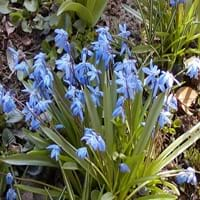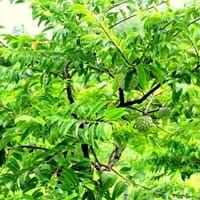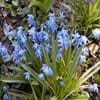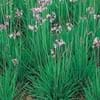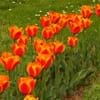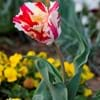Life Span
Perennial
Perennial
Type
Bulb or Corm or Tuber
Fruit
Origin
Europe, South Africa, Asia
Caribbean, South America
Types
Scilla Siberica, Scilla Bifolia, Scilla Peruviana
Pinks Mammoth, African Pride, Late Gold, Geffner, Hilary White
Habitat
Cultivated Beds, Woodland Garden
Warm and moist climatic conditions
USDA Hardiness Zone
2-8
10-13
AHS Heat Zone
Not Available
12-9
Sunset Zone
21,22
Not Available
Habit
Clump-Forming
Upright/Erect
Minimum Height
Not Available
Minimum Width
Not Available
Flower Color
White, Blue, Purple, Pink, Violet
Yellow green
Flower Color Modifier
Bicolor
Bicolor
Fruit Color
Not Available
Light Green, Sea Green
Leaf Color in Spring
Not Available
Light Green
Leaf Color in Summer
Light Green
Light Green
Leaf Color in Fall
Several shades of Green
Light Green
Leaf Color in Winter
Light Green
Light Green
Leaf Shape
Lance shaped
oblong or narrow-lanceolate
Plant Season
Not Available
Summer
Sunlight
Full Sun, Partial Sun, Partial shade
Full Sun, Partial Sun
Growth Rate
Not Available
Medium
Type of Soil
Not Available
Loam, Sand
The pH of Soil
Not Available
Acidic, Neutral, Alkaline
Soil Drainage
Not Available
Well drained
Bloom Time
Not Available
Early Summer, Summer
Tolerances
Drought
Drought
Where to Plant?
Container, Ground, Pot
Container
How to Plant?
From bulbs
Seedlings
Plant Maintenance
Medium
Medium
Watering Requirements
Requires regular watering
Do Not over Water, Does not require regular watering
In Summer
Lots of watering
Lots of watering
In Spring
Moderate
Moderate
In Winter
Average Water
Average Water
Soil pH
Not Available
Acidic, Neutral, Alkaline
Soil Type
Not Available
Loam, Sand
Soil Drainage Capacity
Not Available
Well drained
Sun Exposure
Full Sun, Partial Sun, Partial shade
Full Sun, Partial Sun
Pruning
No pruning needed
Prune young trees into an open vase shape
Fertilizers
5-10-10 fertilizer
Nitrogen
Pests and Diseases
Crown rot
Anthracnose, Diplodia rot, Leaf spot
Plant Tolerance
Drought
Drought
Flowers
Showy
Insignificant
Flower Petal Number
Single
Single
Foliage Texture
Medium
Medium
Foliage Sheen
Matte
Matte
Invasive
Not Available
No
Self-Sowing
Not Available
No
Attracts
Birds
Fruit Bats
Allergy
convulsions, Vomiting
Oral Allergy
Aesthetic Uses
Ground Cover
Not Used For Aesthetic Purpose
Beauty Benefits
Removes dandruff
Promotes Healthy Hair, Promotes healthy skin
Environmental Uses
Air purification
Air purification
Medicinal Uses
Antiasthamatic, Bronchitis, Lung Problems
Diabetes, Diarrhea
Part of Plant Used
Leaves, Root
Bark, Fruits, Seeds
Other Uses
Used as a rodenticide, Used to make hair tonic
Used to make hair tonic, Used to promote healthy blood flow during menstruation
Used As Indoor Plant
Yes
No
Used As Outdoor Plant
Yes
Yes
Garden Design
Container, Mixed Border, Rock Garden / Wall, Wildflower
Fruit / Fruit Tree, Shade Trees, Tropical
Botanical Name
SCILLA
ANNONA squamosa
Common Name
Squill
Sugar Apple
In German
Squill
Zuckerapfel
In French
Squille
Sugar Apple
In Spanish
Escila
Manzana de azúcar
In Greek
σκιλοκρόμμυδο
ζάχαρη της Apple
In Polish
Cebulica
Cukier Jabłko
In Latin
Scilla
Sugar Apple
Phylum
Magnoliophyta
Magnoliophyta
Class
Lilopsida
Magnoliopsida
Order
Liliales
Magnoliales
Family
Liliaceae
Annonaceae
Clade
Angiosperms, Monocots
Angiosperms, Magnoliids
Subfamily
Scilloideae
Maloideae
Number of Species
Not Available
Difference Between Squill and Sugar Apple
If you are confused whether Squill or Sugar Apple are same, here are some features about those plants to help you choose better. Many people think that these two plants have the same characteristics, but one can see Squill and Sugar Apple Information and learn more about it. Fertilizers required for proper growth of Squill are 5-10-10 fertilizer, whereas for Sugar Apple fertilizers required are Nitrogen. Hence, one should know the basic difference between Squill and Sugar Apple if you are planning to have them in your garden to enhance its beauty.
<
Flowering PlantsImportance of Squill and Sugar Apple
Want to have the most appropriate plant for your garden? You might want to know the importance of Squill and Sugar Apple. Basically, these two plants vary in many aspects. Compare Squill and Sugar Apple as they differ in many characteristics such as their life, care, benefits, facts, etc. Every gardener must at least have the slightest clue about the plants he wants to plant in his garden. Compare their benefits, which differ in many ways like facts and uses. The medicinal use of Squill is Antiasthamatic, Bronchitis and Lung Problems whereas of Sugar Apple is Diabetes and Diarrhea. Squill has beauty benefits as follows: Removes dandruff while Sugar Apple has beauty benefits as follows: Removes dandruff.
Compare Facts of Squill vs Sugar Apple
How to choose the best garden plant for your garden depending upon its facts? Here garden plant comparison will help you to solve this query. Compare the facts of Squill vs Sugar Apple and know which one to choose. As garden plants have benefits and other uses, allergy is also a major drawback of plants for some people. Allergic reactions of Squill are convulsions and Vomiting whereas of Sugar Apple have Oral Allergy respectively. Having a fruit bearing plant in your garden can be a plus point of your garden. Squill has no showy fruits and Sugar Apple has no showy fruits. Also Squill is not flowering and Sugar Apple is not flowering . You can compare Squill and Sugar Apple facts and facts of other plants too.
